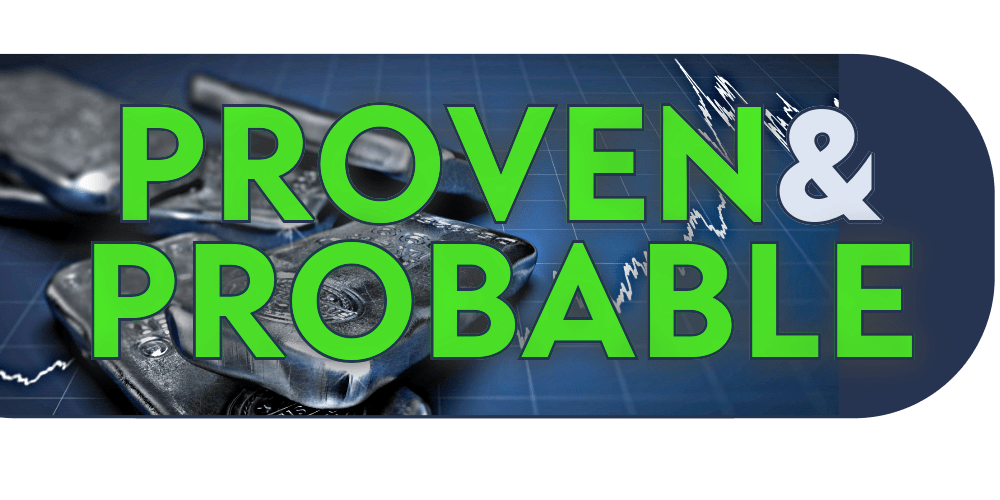During 2018, we started to sound a bit like a broken record. We felt the Fed’s dual policy agenda of simultaneous rate hikes and balance sheet reduction was too aggressive in the context of a global economy bloated with debt and addled far too long by salves of quantitative easing (QE) and zero interest rate policies (ZIRP). We even questioned whether the Keynesian academics at the Fed fully appreciated the direct and measurable impacts of QT on global money supply.
All the way through December’s unanimous decision by the Federal Open Market Committee (FOMC) to hike fed funds for the fourth time in 2018, our concerns gained very little traction in consensus circles. Because we have remained confident in our analysis, we found the second half of 2018 to be a frustrating investment environment.
Powell’s Pivot: The Fed’s Policy Reversal
How quickly things can change. In the four weeks following the December FOMC rate hike, the Fed executed one of its sharpest policy U-turns in memory. Indeed, the Fed’s tonal shift has been so profound, it is difficult to square recent comments from Fed Governors and Regional Bank Presidents with their stated positions just a few weeks prior. What could possibly account for such a dramatic about-face from such a characteristically deliberative body? Is the explanation as simple as the 19.6% decline in the S&P 500 Index (S&P 500)1 between Chairman Powell’s “long way from neutral” comment on 10/3/18 and Secretary Mnuchin’s convening of the President’s Working Group on Financial Markets on Christmas Eve?
In our experience, the contemporary Fed is always hyper vigilant about signs of financial stress with perceived potential to evolve into debt deflation. To us, S&P 500 air pockets are but a symptom of a far more troublesome underlying condition: insufficient credit creation to sustain inflated paper claims. Once equities complete their current Pavlovian bounce, consensus will need to confront the more sobering implications of the Fed’s policy reversal. The Fed is far too tight and has already tripped the switch on long overdue debt rationalization.
Of course, this is precisely the juncture for which we have long prepared.
Gold Coiling for Spirited Advance
Similar to early 2016, when global financial markets were destabilized by the Fed’s initial 12/16/15 rate hike, the gold price responded quickly to market fallout from Chairman Powell’s early October overreach, and has remained in steady uptrend ever since. Importantly, gold’s advance has not been derailed by the S&P 500’s 18.1% bounce from Christmas Eve through 2/15/19. To us, gold’s performance clearly signals Fed policy error, and we believe spot gold is coiling for spirited advance as global central banks pivot back toward easing. For gold investors, this is the mix of real-deal fundamentals on which spectacular gains are based.
Given the seminal nature of catalysts now in play for precious metals, we felt the timing appropriate for a comprehensive review of factors driving the gold price. In this report, we have compiled our Top 10 List of fundamentals supporting a portfolio allocation to gold in 2019. Because our gold investment thesis rests on epic global imbalances, our first few sections review underpinnings of our long-term gold thesis.
#1. Gold has been the Best Performing Global Asset for 18 Years
We often marvel at investor apathy towards gold’s investment merits. Especially in institutional circles, gold is generally viewed as an archaic asset offering negligible portfolio utility. To us, it is remarkable that gold could remain such an institutional outcast after posting the single best performance of any global asset for eighteen years running. Since 2000, not only has bullion outperformed traditional investment assets in cumulative total return, but gold’s ongoing bull market has also proved to be highly consistent in its annual progression. As shown in the rightmost column of Figure 1, the average of gold’s annual performance in nine prominent currencies has been positive in 16 of the past 18 years.
Figure 1: Annual Performance of Spot Gold in Prominent Global Currencies (2001-2018)

Source: Bloomberg.
Given gold’s fringe standing in much of the investment world, it is interesting to note that gold bullion’s cumulative performance since 2000 has trounced the S&P 500. As shown in Figure 2, gold’s cumulative gain from 12/31/00 through 2/15/19 totaled 385.42%, versus a 110.23% advance in the S&P 500 price level, and a 201.15% gain in S&P 500 total return.
Figure 2: Spot Gold2 vs. S&P 5001 (Price and Total Return Indices) (12/29/00-2/15/19)

Source: Bloomberg.
(Note to Reader: Items 2-9 have been condensed. The full 28-page Gold Report can be found here.)
#2. Paper Claims have Decoupled Completely from Productive Output
Synopsis: Greenspan, Bernanke and Yellen Feds have facilitated trillions of dollars of credit creation atop a fairly consistent GDP denominator. Why is debt-to-GDP analysis important and what does it have to do with gold’s portfolio merits? While timing is uncertain, it is inevitable that the U.S. financial system will eventually rebalance to the degree that GDP can productively support total debt levels. There are only two possible routes for the U.S. debt burden to be recalibrated to underlying GDP: default or debasement. Because gold can neither default nor be debased, it is an ideal portfolio component until such time as the U.S. financial system rebalances.
#3. Central Banks are Admitting Tightening is No Longer Possible
Synopsis: Since the Fed’s about-face on rates, the biggest riddle in financial markets is what could possibly have served as the underlying trigger. Was it the S&P 500 swoon, pressure from President Trump or some signal of financial stress not yet publically disseminated? We suspect it was a combination of all three. Whatever the true mix of catalysts, the message has been received, not only by the Fed, but by all global central banks, which have discarded in unison their collective resolve for policy tightening.
#4. The Return of Negative Interest Rates
Synopsis: In unison, global central banks are swinging quickly and hard back towards an easing posture. The world is quickly refocusing on the likelihood and utility of negative interest rates. The global total of negative yielding sovereign bonds has exploded 56% from $5.733 trillion on 10/3/18 to $8.944 trillion on 2/15/19. Already within $1 trillion of its September 2017 high, how large will the ultimate supply of negative-yielding sovereigns become in the unfolding cycle? While just one of many factors influencing the gold price, correlations confirm that gold is taking notice of the global pivot to negative rates.
#5. Fed Credibility Under Siege
Synopsis: While we recognize U.S. Fed power borders on the divine, we have always found the proposition that 19 individuals, no matter how capable and well-supported, might possibly price the world’s reserve currency more efficiently than free markets to be a fairly absurd notion. Sidestepping our perceptions of Fed Governors and Regional Bank Presidents, both individually and as a deliberative body, we have detected since early 2018 distinct erosion in the Fed’s factual credibility.
#6. Deteriorating U.S. Fiscal Position
Synopsis: One of the least kept secrets in global financial markets is the deteriorating fiscal position of the United States. Everyone knows the Trump Administration’s Office of Management and Budget (OMB) now forecasts $1 trillion-plus budget deficits in fiscal 2019, 2020 and 2021. Everyone knows OMB assumptions for GDP growth in those years are likely a bit optimistic (3.2%, 3.1% and 3.0%). And everyone knows post-tax-cut federal receipts are already lagging advertised projections.
#7. Gold Versus U.S. Dollar as Strategic Reserve
Synopsis: Central bank demand for gold soared to a multi-decade high in 2018, rising 74% YOY – the highest level of CB net purchases since the dissolution of Bretton Woods (1968-1973). There is no question that President Trump’s penchant for sanctions has energized longstanding rancor towards the dollar-standard system. As recently as 2000, 72.7% of global foreign-exchange (FX) reserves were denominated in U.S. dollars. By year-end 2018, the U.S. dollar had shrunk to 61.9%. We believe that the declining use of dollar-denominated assets by global central banks has less to do with direct supply/demand impacts in currency markets than with the symbolic impact on the U.S. dollar’s hegemonic status.
#8. Global Policy Uncertainty
Synopsis: Since 2016, the twin shocks of Brexit and the Trump Presidency have bookended near continuous political turmoil in global markets. Investors have become inured to the daily twists and turns of President Trump’s seemingly erratic decision-making and Prime Minister May’s Sisyphean negotiations with both the EU and her own Parliament. Indeed, investors’ increasingly thick skin to political headline risk may be leading to underestimation of potential black swans forming on the horizon.
#9. Dormant Volatility
Synopsis: Important components of our 2019 gold investment thesis are the lingering imbalances from eight years of QE (quantitative easing) and ZIRP (zero-interest-rate-policy). Artificially depressed interest rates always distort time preferences and foster malinvestment. In the instance of the post-GFC (Great Financial Crisis) Fed, these imbalances have become epic in size and scope. At Sprott, we adhere to the theory that volatility generally signals change. We believe isolated outbreaks of volatility during 2018 served as early signposts of profound change in financial markets (the unwinding of eight years of volatility-suppressing QE and ZIRP). What is being vastly underestimated by investor consensus is the stored force of volatility suppression during these past eight years.
#10. Gold as Non-Correlating Portfolio Asset
In documenting an objective record of gold’s portfolio utility, one logically begins with gold’s traditional profile as safe-harbor asset. It goes without saying that gold’s safe-haven reputation accrues from bullion’s established history of relative outperformance during periods of financial stress. As shown in Figure 18, gold has done a masterful job of insulating portfolio capital from sharp declines in U.S. equities during the past three decades of financial crises.
Figure 18: S&P 500 Index versus Spot Gold During “Crisis” Periods (1987-Present)


Source: World Gold Council. Dates used: Black Monday: 9/1987-11/1987; LTCM: 8/1998; Dot-Com: 3/2000-3/2001; September 11: 9/2001; 2002 Recession: 3/2002-7/2002; Great Recession: 10/2007-2/2009; Sovereign Debt Crisis I: 1/2010-6/2010; Sovereign Debt Crisis II: 2/2011-10/2011; Greek Default: 6/2015-9/2015.
Institutional focus on non-correlating assets has directed trillions-of-dollars of investment capital towards hedge funds and specialized investment partnerships in disciplines such as real estate, private equity and venture capital. A more recent trend, however, has been mounting investor backlash against elevated fees charged by alternative managers in the context of mediocre investment returns (not to mention onerous liquidity and lockup provisions). In short, a marquee consideration for today’s pension and endowment stewards has become whether the fees, lockups and obfuscation of alternative investments are truly worth their while.
Even more challenging to the industry status quo, gold bullion has rivaled the performance of alternative asset indices while simultaneously displaying far lower correlation to these vehicles than either stocks or bonds. As shown in Figure 23, the correlation between prominent alternative asset indices and the S&P 500 Index has averaged 80% over the decade through 2018. By way of comparison, the 10-year correlation between these same indices and spot gold has averaged just 9%. At an 80% correlation-rate with U.S. equities, high-priced and unwieldy alternative vehicles seem hardly worth their freight.
Figure 23: Correlations between Alternative Asset Indices and S&P 500 Index, U.S. Treasuries and Spot Gold (Monthly Data Trailing 10-years through 2018)

Source: World Gold Council.
We thank you for your diligence in reviewing our fundamentals supporting a portfolio allocation to gold in 2019. We expect gold’s 2019 performance to more than justify the effort.
Download Report PDF – Short Version (7 pages)
Download Report PDF – Long Version (28 pages)
Trey Reik
Senior Portfolio Manager
Sprott Asset Management USA, Inc
203.656.2400
| 1 | S&P 500® Index represents 505 stocks issued by 500 large companies with market capitalizations of at least $6.1 billion. This Index is viewed as a leading indicator of U.S. equities and a reflection of the performance of the large-cap universe. The SPX Index represents price only, and SPXT Index represents total return with dividends reinvested. |
| 2 | Spot gold is measured by the Bloomberg GOLDS Comdty sub-index. |
This content is intended solely for the use of Sprott Asset Management USA Inc. for use with investors and interested parties. Investments, commentary and statements are unique and may not be reflective of investments and commentary in other strategies managed by Sprott Asset Management USA, Inc., Sprott Asset Management LP, Sprott Inc., or any other Sprott entity or affiliate. Opinions expressed in this presentation are those of the presenter and may vary widely from opinions of other Sprott affiliated Portfolio Managers or investment professionals.
This content may not be reproduced in any form, or referred to in any other publication, without acknowledgment that it was produced by Sprott Asset Management LP and a reference to www.sprott.com. The opinions, estimates and projections (“information”) contained within this content are solely those of Sprott Asset Management LP (“SAM LP”) and are subject to change without notice. SAM LP makes every effort to ensure that the information has been derived from sources believed to be reliable and accurate. However, SAM LP assumes no responsibility for any losses or damages, whether direct or indirect, which arise out of the use of this information. SAM LP is not under any obligation to update or keep current the information contained herein. The information should not be regarded by recipients as a substitute for the exercise of their own judgment. Please contact your own personal advisor on your particular circumstances. Views expressed regarding a particular company, security, industry or market sector should not be considered an indication of trading intent of any investment funds managed by Sprott Asset Management LP. These views are not to be considered as investment advice nor should they be considered a recommendation to buy or sell. SAM LP and/or its affiliates may collectively beneficially own/control 1% or more of any class of the equity securities of the issuers mentioned in this report. SAM LP and/or its affiliates may hold short position in any class of the equity securities of the issuers mentioned in this report. During the preceding 12 months, SAM LP and/or its affiliates may have received remuneration other than normal course investment advisory or trade execution services from the issuers mentioned in this report.
SAM LP is the investment manager to the Sprott Physical Bullion Trusts (the “Trusts”). Important information about the Trusts, including the investment objectives and strategies, purchase options, applicable management fees, and expenses, is contained in the prospectus. Please read the document carefully before investing. Investment funds are not guaranteed, their values change frequently and past performance may not be repeated. This communication does not constitute an offer to sell or solicitation to purchase securities of the Trusts.
The risks associated with investing in a Trust depend on the securities and assets in which the Trust invests, based upon the Trust’s particular objectives. There is no assurance that any Trust will achieve its investment objective, and its net asset value, yield and investment return will fluctuate from time to time with market conditions. There is no guarantee that the full amount of your original investment in a Trust will be returned to you. The Trusts are not insured by the Canada Deposit Insurance Corporation or any other government deposit insurer. Please read a Trust’s prospectus before investing.
The information contained herein does not constitute an offer or solicitation to anyone in the United States or in any other jurisdiction in which such an offer or solicitation is not authorized or to any person to whom it is unlawful to make such an offer or solicitation. Prospective investors who are not resident in Canada or the United States should contact their financial advisor to determine whether securities of the Funds may be lawfully sold in their jurisdiction.
The information provided is general in nature and is provided with the understanding that it may not be relied upon as, nor considered to be, the rendering or tax, legal, accounting or professional advice. Readers should consult with their own accountants and/or lawyers for advice on the specific circumstances before taking any action.





